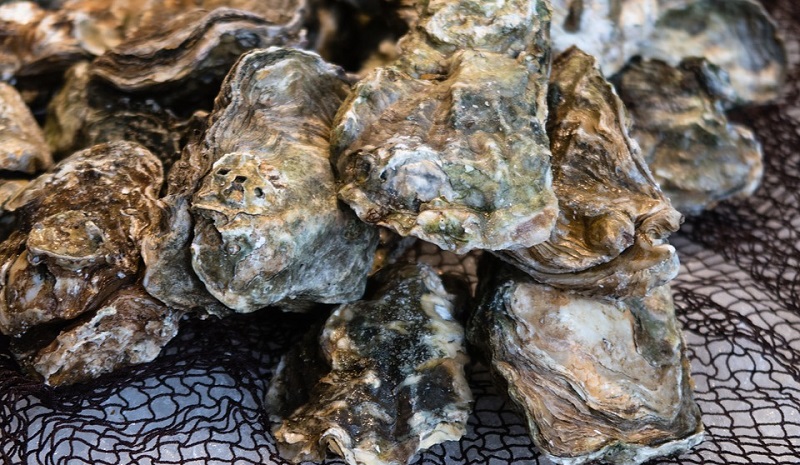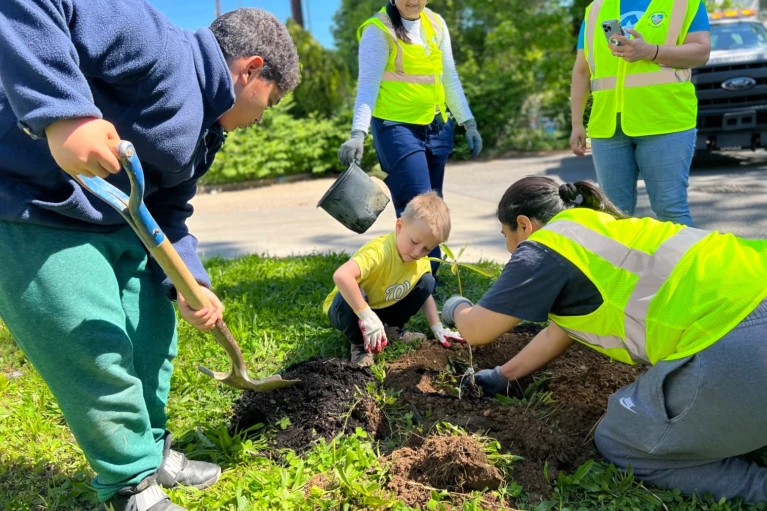After Two Years, Consensus on Oyster Policy Still Elusive in Maryland

By Tim Wheeler
Bay Journal
It’s hard to come together over oysters in Maryland. Two years ago, seeking to get past seemingly endless conflicts between environmentalists and watermen, Maryland lawmakers ordered fisheries managers to try a more consensus-based approach to managing the state’s oyster population.
In a bill passed over Gov. Larry Hogan’s veto, the General Assembly directed the state Department of Natural Resources to work with scientists and help the DNR’s oyster advisory commission come up with ideas for rebuilding the oyster population while maintaining a sustainable harvest. Any recommendation would have to be supported by 75% of the panel’s members.
After meeting more than two dozen times, the DNR panel reported Dec. 1 that it had agreed on 19 recommendations — only one of which called for doing anything different about oyster management. That one urged the state to invest $2 million a year over the next 25 years to restore oysters in Eastern Bay, once a source of bountiful harvests, but which hasn’t been productive for the last two decades. The other recommendations called mostly for more shell or substrate to restore or replenish reefs, plus more research, data collection and evaluation of existing management practices.
“I think everybody was hoping for a little more consensus,” said Anne Arundel County Sen. Sarah Elfreth, a chief sponsor of the oyster management law and a member of the DNR advisory panel.
Hogan, in vetoing the bill, had argued that it would interfere with the oyster management plan the DNR had updated in 2019 and foil progress made in bridging disagreements. But the approach lawmakers spelled out in the 2020 law followed the format of more limited negotiations that had forged an agreement between watermen and environmentalists over oyster management in the Choptank and Little Choptank rivers on the Eastern Shore.
That effort, called Oyster Futures, produced a series of recommendations, some calling for changes in harvest rules and others proposing new restoration initiatives.
But the DNR commission’s oyster policy review was handicapped, participants agreed, by having to hold most of its meetings virtually. Some members, particularly watermen in rural areas of the Eastern Shore and Southern Maryland, had difficulty getting online or being able to participate.
“I was really disappointed in the process,” said Ann Swanson, executive director of the Chesapeake Bay Commission and member of the advisory panel. “We never got to the point where we could ever truly give and take — give on some harvest advancements in exchange for some ecological gain.”
The lack of in-person meetings prevented commission members from getting to know each other and understanding other points of view.
“We never ate together. We never chatted together,” Swanson said. “We’d come into a supercharged three-hour meeting, and so the conversations that you have that instill trust didn’t happen.”
The commission had plenty to talk about. A team of scientists from the DNR and the University of Maryland Center for Environmental Science analyzed the likely results of more than 70 different options for adjusting oyster management and restoration policies and practices.
Michael Wilberg, a member of the UMCES team, said computer modeling of various scenarios had helped the Oyster Futures group work through their differences. But the statewide review was hampered, he said, by the meeting handicaps and a fixed deadline for delivering recommendations to the governor and legislature.
“One of the important parts of this process is for people to propose new ideas and see us go out and try them and bring them back to the group,” he said. “That gets people talking to each other rather than trying to go around each other.
“I don’t feel we got quite to that level,” he added. “The group was just trying to get there, but we just ran out of time.”
Even so, Allison Colden, fisheries scientist with the Chesapeake Bay Foundation, said the computer modeling identified at least a couple of “win-win” scenarios that she thought could be the basis for agreement. But, she said, “we ended up with a result where we really didn’t come to consensus on anything with regard to making forward progress on oysters.”
A couple of the policy scenarios run through the computer model did project increases in oyster abundance and harvests alike, with more shells available to replenish worn-down reefs, Wilberg said.
“The problem I think people had … was how expensive they were,” he said. To achieve that modeled result, the state would need to invest about $20 million a year, he said, or 10 times what it spends now, to replenish reefs with recycled oyster shells and hatchery-spawned juvenile oysters.
Watermen likewise expressed frustration.
“I’m not real happy, but we’re moving,” said Robert Brown, Sr., president of the Maryland Watermen’s Association. He and others had argued that all the state needed to do was return to its longstanding practice of replenishing reefs with oyster shells and allowing watermen to transfer juvenile “seed” oysters from the Lower to the Upper Bay. Computer analysis didn’t support that, though.
Despite the commission’s near gridlock, watermen said the oyster population appears to be rebounding on its own, after two summers of good natural reproduction.
Wilberg agreed that there are signs that after decades of ups and mostly downs, the oyster population could be starting to stage a strong recovery. But oyster reproduction is uneven in Maryland’s portion of the Bay, he noted, and the ability to rebuild the stock is limited by the loss of many of the reefs that used to sustain the population.
“It’s possible that the future looks really rosy,” he said. But the model indicates that if current management practices continue unchanged, he added, “it looks like we should expect a slow decrease in the future, mainly because of the loss of [reef] habitat.”
As the last commission meeting ended, DNR Secretary Jeannie Haddaway-Riccio, who two years ago had called the legislature’s action “misguided,” strove to put the outcome in a positive light.
“I think that they did better than we expected,” she said, adding that members had worked through “incredibly hard circumstances.”
“We still have a lot of work to do,” she concluded, “but the fact that they were able to agree on some things is a great start.”




 Creative Commons Attribution
Creative Commons Attribution